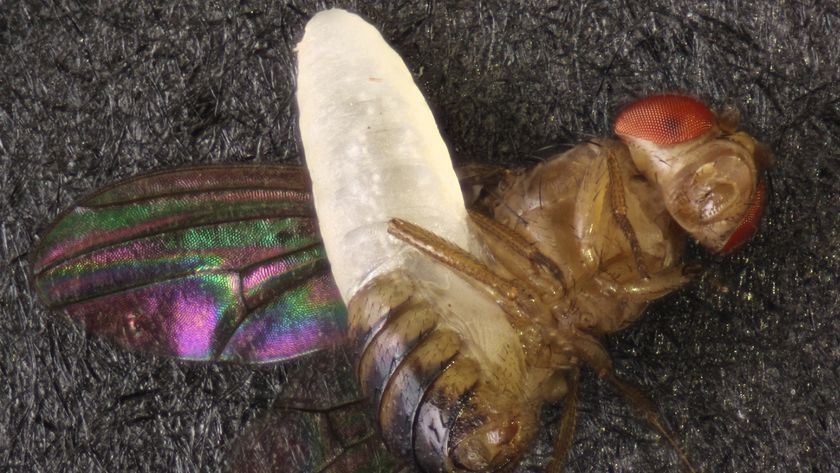Surprise Strategy: Bees Smother Enemies

Cyprian honeybees don't smother their enemies with kindness—they just smother them to death, research now reveals. This novel strategy has never been seen before in insects, "and probably in all animal species," apidologist Gerard Arnold at the National Center of Scientific Research in France, told LiveScience. Cyprian honeybees (Apis mellifera cypria) do possess stingers to defend themselves. However, their archenemy, the Oriental hornet (Vespa orientalis), is protected from such attacks by their hard body armor. The predatory hornets tend to attack bee colonies en masse in the middle of the autumn, explained researcher Alexandros Papachristoforou of Aristotle University of Thessaloniki, Greece. Previous studies revealed Asian honeybees can kill hornets by completely engulfing them, making the predators die from the heat inside the ball of bees—a strategy dubbed "thermo-balling." However, Oriental hornets are theoretically resistant to thermo-balling, adapted as they are to the hot and dry climate of Cyprus. Although the heat inside a thermo-ball can reach 111 degrees F (44 degrees C), the heat-resistant Oriental hornet only keels over at temperatures of 122 degrees F (50 degrees C) or more. Now scientists find Cyprian honeybees can kill hornets by suffocating them, a strategy the researchers have dubbed "asphyxia-balling." "The domestic bee has never ceased surprising us," Arnold said. "Under stressful conditions, honeybees can develop remarkable mechanisms in order to survive." The scientists collected live insects from Cyprus and took them back in their hand luggage for study in their labs. "Knowing that the hornets could somehow destroy the cage that you have trapped them" was "a very funny and uncomfortable situation," Papachristoforou recalled. Hornets normally breathe via small openings in their sides called spiracles. These are covered by structures known as tergites. In their experiments, the researchers saw that bees mob the guts of hornets, covering the spiracles. To see if the bees killed the hornets using smothering, the scientists held open the tergites of some hornets with tiny plastic blocks. They found bees took twice as long to kill such modified hornets—roughly two hours instead of one. "To kill the high-temperature-tolerant hornet, Cyprian honeybees have developed an alternate strategy to thermo-balling and stinging," Papachristoforou said. "They appear to have identified the hornets' 'Achilles heel' by asphyxiating the predator." Papachristoforou, Arnold and their colleagues will detail their findings in the Sept. 18 issue of the journal Current Biology.
- Video: Wasp Hound
- Backyard Bugs: The Best of Your Images
- 10 Amazing Things You Didn't Know About Animals
Sign up for the Live Science daily newsletter now
Get the world’s most fascinating discoveries delivered straight to your inbox.












